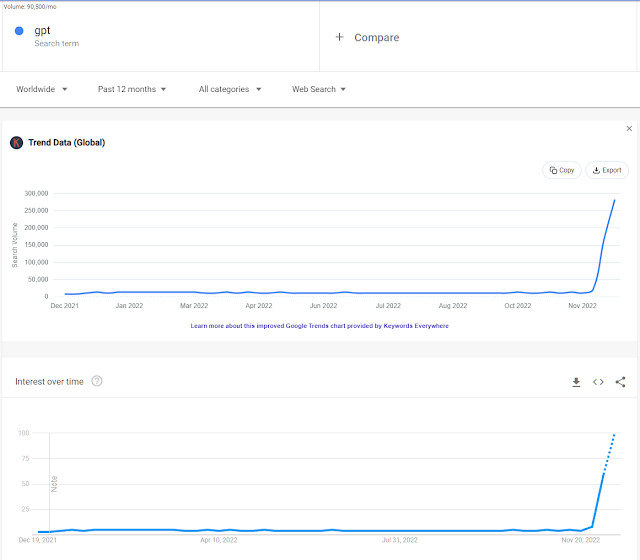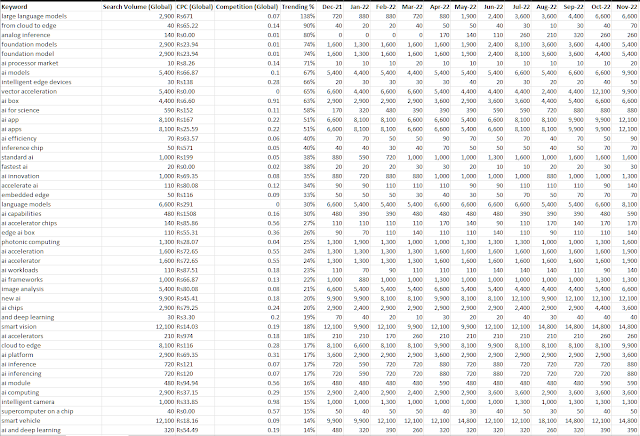Optimizing a Semiconductor Company Website for Search Engines - Part 2
This is the second article in our SEO process for semiconductor companies series. In the first part, we researched keywords for our hypothetical company, Mirella. In this part, we will do a technical audit. Since Mirella doesn't exist, we are going to use the EdgeQ website as a proxy.
We will use a tool named Labrika to do the audit because we have a subscription plan. Several good tools are available and you can pick the one you want. We have to start by uploading the keywords that we generated in the first part and then selecting a region, search engine, search depth and platform. In this case, we are going to choose Google on both desktop and mobile and search up to a depth of 100 in the United States. The complete audit report can be accessed at this link.
The report is highly detailed, quite self-explanatory and flags several errors and warnings. We will only focus on the critical SEO errors for remaining within the scope of this blog. The format I will use is to first point out what the error is, then use the description from Labrika to explain what it means and finally offer a solution or a link to further reading. Please keep in mind that Labrika will flag what the search engines see - humans may not see the same thing when they visit the website.
- 13 pages with identical meta description tags.
- Using the same meta description tag on multiple pages indicates to search engines that you have duplicate content on these pages. This is likely to decrease SERP rankings. If the search engines deem your description tag to be irrelevant to the content found on the page it is likely to generate its own description which will not be tailored to the user and will decrease CTR.
- Additional reading: See mistake #5 in this Search Engine Journal article.
- 14 pages have missing H1 tags.
- The header 1 tag <h1> is the most important header tag on your page and tells the search engines what your page is about and is also likely to contain keywords you are trying to rank for. The <h1> tag is the most important heading of the first level. Search engines give substantial weight to <h1> headings with keywords. The <h1> of a page should be an overarching topic of the page, and thus likely will also include keywords.
- Additional reading: How to use header tags.
- 2 pages with thin content. The media page has just 100 words while the contact page just 23
- Thin content pages are pages with a small content. Search engines consider such pages as useless for users and reduce site rankings in SERP.
- Additional reading: What is thin content and how to fix it?
- 41 pages with plagiarism.
- Plagiarism is the unauthorized use of texts posted on other sites. Your site can be penalized for stealing and using someone else’s content. If there is text on your site that is identical to your competitors’ content (>= 30%), search engines may decrease your rankings. Search engines on occasion can incorrectly identify the authorship of text and penalize your site even if someone copied content from your webpage originally. Copying is only allowed for online stores using manufacturers descriptions whereby it is hard to make a unique description for each item (although you should always try for optimal SEO). Online stores with the original description have advantages in SERP rankings. Our plagiarism checker is best at detecting blatant plagiarism, which can seriously affect the rankings of your site. We always recommend checking any suspicious pages manually, that are flagged up by our algorithm.
- This is an interesting one. While the content has been flagged by an algorithm for plagiarism, a quick review will tell us that it is not plagiarism at all. This shows that a human review can and will negate a critical error flagged by the algorithm in some cases. In this specific case, the company has just reposted news or press releases on its own site. The same content is also visible on syndicated news sites or other domains with high authority, causing the algorithm to flag it. Content marketers need to be very careful about duplicating content as this is going to needless affect rankings - just adding links would have been much better. Another option is to use the rel=canonical tag that helps Google identify the original post and rank accordingly.
- Here's a thread discussing this on Moz.
- 13 pages have a long meta description (>320 characters)
- A long meta description is not included in the snippet and will be truncated. Search engines will truncate longer descriptions than 240 to 280 characters (dependent on device). In this case, the keywords are not included in the snippet, and the search engines can use a random text fragment from the page for the snippet instead of your desired meta description. You should always write a relevant description with between 240 and 280 characters. If you do so, then Google is more likely to use this tag when generating a snippet.
- We are going to ignore this. There just is no evidence that Google considers meta description as a ranking factor anymore. However, it is always a good idea to write a concise meta description that you want Google to show to users.
- Additional reading: Are meta descriptions a ranking factor?
- 6 pages with less than 5 internal inbound links
- Your internal linking structure should always be pointing (internal outbound linking) at least 5 internal links to pages you wish to rank on Google. Pages receiving less than 5 inbound internal links are not likely to be seen as authoritative by Google in your site’s hierarchy. The more links to a page, the higher it's rank.
- While this is true, also make sure that you don't go overboard with internal links. There's also a rule against that too.
- 13 keyword groups without a landing page.
- This one is self explanatory. Keyword groups that each need a landing page with related content pertaining to keyword/s in the group.
- Further reading: How to Create & Optimize Landing Pages for SEO. In addition, read this thread on keywords and landing pages.



Comments
Post a Comment